#proxima centauri b
Video
“ PROXIMA CENTAURI B “. // © AstrooSpace
“ Próxima Centauri b, also known as Proxima b, is an exoplanet located in the Proxima Centauri star system, the closest star to our Sun. Discovered in 2016, it is within the habitable zone, where conditions may be suitable for the existence of liquid water on its surface. Proxima Centauri b has sparked significant interest and research as a potential target for the search for extraterrestrial life. “
Music: visioner. - Menace (Slowed + Reverb)
Voice-Off & Animation : © MelodySheep
#space#planets#earth#moon#sun#mercury#Venus#Mars#Jupiter#Saturn#Neptune#uranus#Pluto#Alpha Centauri#Proxima Centauri b#Galaxies#SolarSystem#MilkyWay#universe#4K#8K#12K#reels#aesthetics#explore#follow#discover
232 notes
·
View notes
Text
Proxima Centauri B
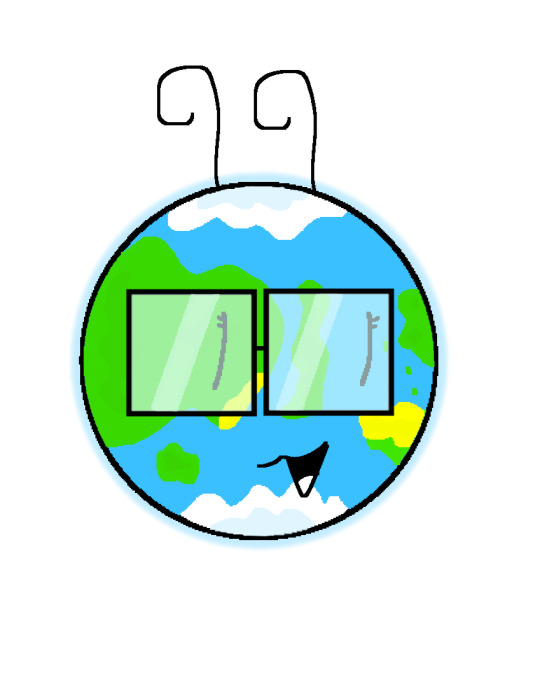
I really need to draw more about this planetary system
8 notes
·
View notes
Note
Top 5 planets!!!
😍 Thanks for the fun ask, aquaticpal! I'm going to modify this slightly because I already put Earth as my favorite celestial body of all in my previous post about that. I'll do my top 5 planets excluding Earth so I don't repeat myself.
Counting down!
5. Pluto
If you've been paying attention to some astronomy in the last decade or two, you probably know Pluto isn't being called a "Planet" officially anymore.
...I don't care.

The image above shows Pluto (lower right) and its large moon Charon (upper left) as imaged by the New Horizons probe. The frozen heart-shaped feature on Pluto's icy surface melted my own heart (and I wasn't alone).
The whole hullabaloo about Pluto not being a planet is just semantics. It's a celestial body with enough gravity to be round, and it orbits the Sun. I'll count it.
So, why does it make it to my favorites list?
Pluto is geologically active (like Earth - it has its own geology happening on its surface, like volcanoes, tectonics, and erosion), a reality many did not expect until the New Horizons spacecraft started returning close-up pictures of this distant world. The smoothness of Pluto's signature heart-shaped feature (particularly the left side) is a dead giveaway that geological activity is happening on its surface. Worlds where there's no active geology are covered in craters everywhere, not just in some places, and the more recently it's been active the fewer craters there are per area. So.... Pluto is a 'living world' with enough energy inside it to make its insides move.
Cool.
It might be the close orbit of its moon Charon causing it - the shifting gravity stirring up Pluto's innards (and Charon's!), causing friction, and thus heat.
Either way, there's enough geological activity on Pluto to create these gorgeous mountains:
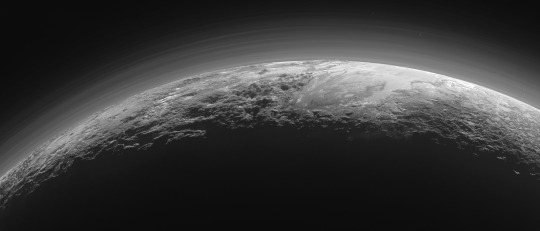
It has seasons during which the frozen nitrogen at its surface becomes warm enough to create mists - nitrogen fog. Imagine if Earth were cold enough that our very air would turn into blocks of ice that create white vapor - kind of like dry ice does.
Pluto is fascinating: a world that defied our expectations. I love it.
4. Trappist-1f

This artist's rendition shows what exoplanet Trappist-1f might look like if it has liquid surface water. It's too small and too far away to get an actual picture, but the evidence shows this planet exists in the habitable zone of its star.
The Trappist-1 star system lies about 40 light-years from Earth (very nearby in the grand scheme of things). Within it, seven planets orbit a small, cool red dwarf star (that's Trappist-1). The planets don't have 'given' names like Pluto or Earth. They're assigned letters b-h, with b the closest and h the furthest from the star. Planets e, f, and g are all in the star's habitable zone, which means they could have liquid water on their surfaces.
So, why did I specifically pick Trappist-1f? It's the planet most perfectly centered in the habitable zone, and its properties are all quite similar to Earth's: it's radius, mass, density, and surface gravity. In order to be hospitable to life as we know it, it's important for a planet to be able to keep itself warm (not just from the light from its Sun - it needs its own, internal heat source, too, to stay geologically active and produce a protective magnetic field - this keeps the atmosphere stable rather than letting its sun's radiative wind blow lots of it away, and also protects life on its surface from that same radiation that would split our complex organic components apart).
Trappist-1f is extremely close to its star, but the star is very cool, so it's unlikely to be very hot. It only takes the planet 9.2 days to orbit the star once. (Yes, you read that right - Trappist-1f's year is only 9.2 Earth days long! If you lived there, I bet you'd find some other way to celebrate birthdays. You'd be having a party just about every week).
I'm all for finding planets that might have water, and therefore might have life... or might be good for us to live on, some day.
The other cool thing about its place is ALL the planets are quite close to the star, so they'd appear huge in the sky regardless of which of the other planets you were standing on. This is a cool, artistic interpretation of that:

3. Proxima Centauri b
Speaking of places where we might be able to live...
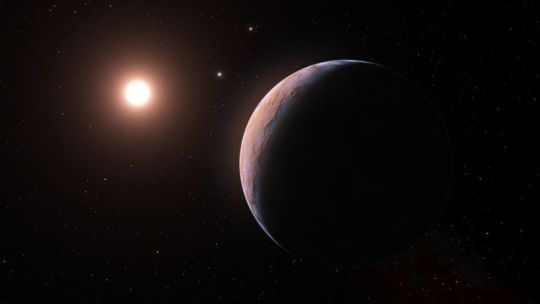
...welcome to Proxima Centauri b - the nearest exoplanet to Earth... and also in its star's habitable zone.
Proxima Centauri b is a small, cool, red dwarf star part of the Alpha Centauri system, a triple-star system consisting of two brighter stars (Alpha Centauri A and Alpha Centauri B, both similar to the Sun) which are close to each other, and the cool red dwarf Proxima Centauri b, still orbiting the others but much farther away.
And around that small cool dwarf star is a planet not too different from Earth.
I can't stress enough how incredible that is.
This is the very nearest star system to our own, only four light-years from here.
And in it, there is already a possible stepping stone for us to move outward into the Cosmos. And not just a stepping stone, but possibly somewhere habitable.
Wow.
We need to learn more about this planet. It may or may not be hospitable. It may or may not have an atmosphere. We just don't know yet. But it's hope. It's one of many signs that the galaxy is absolutely littered with planets, and there may be many worlds like ours.
2. Jupiter
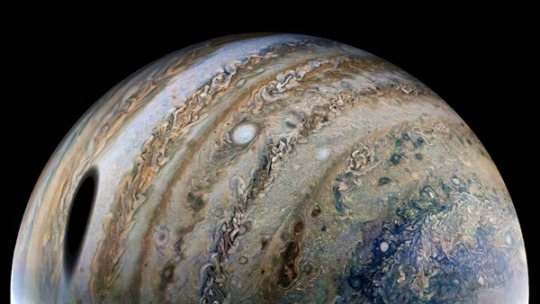
This image taken by the Juno Probe shows a lot of what makes Jupiter awe-inspiring: roiling masses of hydrogen and helium gas with traces of methane, ammonia, silica, and sulfur creating myriad colors in its clouds, storms which could swallow several Earths whole, and of course its huge mass which make it a gravitational well, holding on to a minimum of 80 moons. The huge shadow of its moon Ganymede is visible on the left-hand side in the picture.
First of all, Jupiter is, quite simply, beautiful. Just look at it.
All those colors, the swirls, its absurdly fast rotation (a 10-hour period!) pulling its clouds out into these thin bands. It's so striking. Add to that the shadows of its many moons crossing its surface, and you have a recipe for endless visual fascination.
But that alone isn't enough to make it one of my favorites.
I love Jupiter because it protects us.
Jupiter's gravity is so strong it tends to divert and even capture many objects which hurtle inward toward the Earth and the other inner planets, meaning fewer things actually hit the Earth than they otherwise would. Jupiter is the batter at plate, and we're the catcher. We really don't want any of those strikes thrown to cross the plate.
Thank-you, Jupiter.
I also love Jupiter because it provides a home for other worlds - the moons Europa and Ganymede in particular - which might be places to find life. Europa's the far more likely of the two, but I won't belabor that point. Suffice to say, Jupiter's gravity provides the energy that keeps Europa active, with an underground ocean, potentially a safe haven for organic life. I hope to live long enough to find out.
Mars
My pattern by this point is probably clear. I'm rooting for life and for places we could move to one day. The absolute tippy-top of that list is Mars.
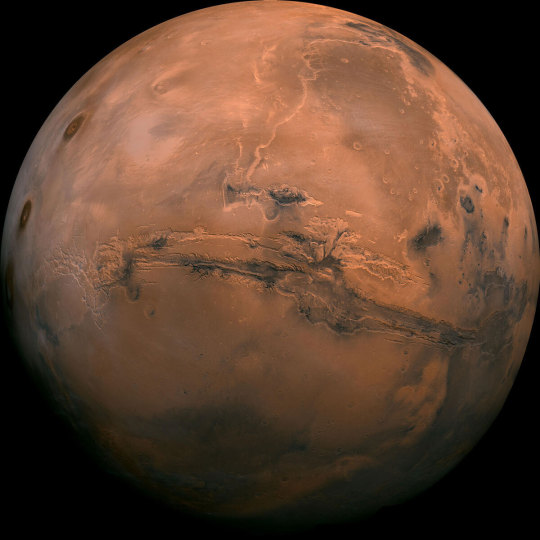
This image shows many features of Mars which show past geological activity and the outline of what once was the shore of a truly vast ocean.
The more missions we send to Mars, the more likely we realize it is that Mars could once have had life on its surface, and could even harbor it right now below ground.
You can see the outlines of several ancient volcanoes in the left-hand side of this picture, and a truly massive TEAR in the planet's surface front-and-center. That thing is as long as the entire continent of North America. There are plenty of craters, which means it hasn't been geologically active ( at least not much) in a long time, but the signs of past activity on its surface are clear. It has dry riverbeds. Dry ocean beds. Dry lake beds. Dry glacial footprints. Ancient volcanoes. The robots we've landed to explore the surface have found clear, smoking-gun type evidence of past running water in these places (clay is a big one, and there's hematite, too), and the basic components for life are there. The one thing we haven't found yet is life itself.
We now understand Mars lost its once-watery exterior thanks to it being too small. Its interior cooled off, slowing and nearly stopping geological activity entirely, and stopping Mars' rotation from creating a magnetic dynamo like Earth has - so Mars lost its protective magnetic bubble stopping the Sun's radiation from striking its atmosphere and surface. The Sun basically blew Mars' air away into space, and irradiated its top soil. So.. the top two inches of the soil are entirely barren.
But RIGHT below that.... we have found water ice. And below that... there are underground rivers. Sinkholes and orbital measurements of density have shown that.
We might be able to send people there and have them survive underground. We'd need some way to deal with Mars' lost protective bubble at some point if we wanted to make the surface habitable. Dome cities might be okay, though those always creep me out. I just picture something puncturing it and causing problems. But.... it's so close. And it might have life, or once had it.
I have so much to say about all these places, but if I keep going this will just become interminable. So... I'll stop. Here's my list. I hope you enjoy!
#answering asks#top 5 planets#mars#jupiter#pluto#trappist-1f#proxima centauri b#astronomy#a bit of planetary geology#planets#what makes planets spiffy#the search for life#and livable places#thanks for the ask#long post
32 notes
·
View notes
Note
Could you draw up a sophont that hails from Proxima Centauri b? The for sure features/ideas in my mind to work off on are that they're bilaterals with a crest/frill akin to a ceratopsian, but is made up of filaments.
Thanks for the submission! I can up with a lot of ideas (as seen in my previous post) but I decided on this armored, pentapedal sophont dude. (Sorry if the crest isn’t made of “filaments” I’m not sure what that would supposed to be, sorry!! I hope you like it anyways ;-;)
I call them simply “Centauri Werms” because they are from Proxima Centari b and are sorta worm like
I tried to tie in elements of a more plausible organism and what they could possibly evolve into over time. Most beginning life on PCb would be aquatic, and most likely have to be semi resistant to their sun’s unhinged rays. But I think eventually they would make their way onto land, and perhaps, like in this case, become sophont. (You can tell I was indecisive on the armor pattering)
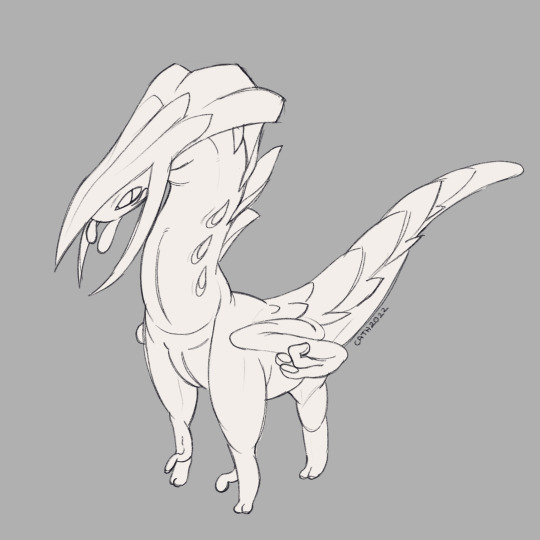
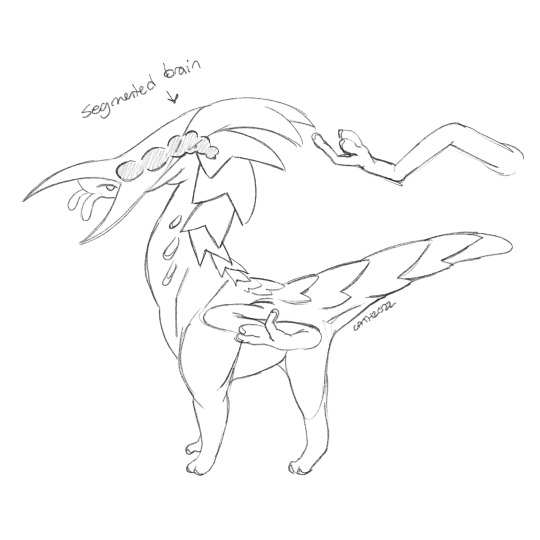

Here are my ideas for their evolution. Basically beginning as a simple water based organism, that eventually ventures in land. Their armor becomes more extravagant and now also aids in defending predators. Since they are pentapedal, I considered that the middle set of limbs becoming the main manipulators interesting and more balancing. In this little sketch above, you can see the middle werm “waving” it’s arms as a possible defense tactic. This marks the beginning of their eventual major differentiation.

Finally, some eye anatomy. For simplicity, I draw them as slit-pupil eyes, but that’s not entirely it. The “specialized” eye has shrunk massively, since the Centari Werms have found other ways to protect themselves from the sun and can also predict any unordinaries without the help of this organ. And, since their heads are heavily armored, the peripheral (sorry for the bad spelling) eyes are facing more upwards to see beyond their crests, planted on the cheekbones/unnamed structure that appear to be cheekbones (still figuring out their internal structure)
Anyways, that’s pretty much it! I hope you guys like this guy, and be sure to give me more suggestions!
#digital art#my art#original species#alien art#aliens#species concept#speculative biology#speculative evolution#proxima centauri#proxima centauri b#Centauri Werm#sophont#intelligent species#xenobiology
31 notes
·
View notes
Text
EP. 13: FIVE REALISTIC WAYS TO REACH THE STARS.
In the future, humans will explore the stars. This may happen in a few decades or centuries, but it is inevitable. The long time period is due to the fact that stars are incredibly distant, beyond what we can imagine. Our current technology is not advanced enough to travel through interstellar space. However, as we advance in our understanding of physics and technology, it is likely that we will…
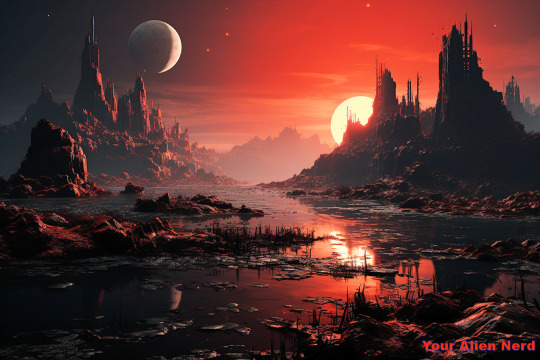
View On WordPress
#anti-matter propulsion#generation ship#interstellar travel#ion propulsion#Proxima b#Proxima Centauri#Proxima Centauri b#solar sail#warp bubble#warp drive#wormoholes
2 notes
·
View notes
Text
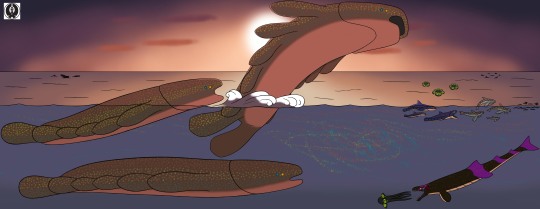
This is another blast from the past; a seascape piece featuring a hypothetical environment from the real world planet Proxima B. This depicts some of the ocean life for this world, two of which I gave glimpses of in my last piece dedicated to Proxima B. I'll try to give a quick rundown of the lifeforms shown here (I make a lot of references to much older posts related to Proxima B).
Titan Fishamander: Growing up to 84m long, the Titan Fishamader is the largest organism on Proxima b. They feed on anything that enter their gaping mouths though its mostly consists of smaller marine organisms (indicated by the swirling colors in the water).
Killer Fishamander: They are Proxima B's equivalent to orca's in behavior and size (slightly over 10M). Killer Fishamanders travel in small pods that pursue prey in the water and on the shores which they can pursue thanks to their powerful lobbed fins.
Seaspinner: Dolphin-like relatives of the smaller, insect-like Springers, Seaspinners travel along the shores in large pods hunting smaller organisms.
Seadiscs: Seadiscs are an equivalent to flying fish from earth accept with more circular fins and descended from terrestrial ancestors. They are among the smallest members of a family of carnivores that incudes Drakes, Cockatrices, and the sapient Proxima Centaurians.
Kraken Seafans: Hailing from a family of photosynthesis plantanimals, Kraken Seafans are the most mobile of their group and even occasionally hunt smaller prey for extra nutrients along with photosynthesizing.
Leviathan: The Leviathans are solitary ambush hunters who are they apex predators of Proxima B's oceans. At over 40m in length, they are the largest members of their family, even out sizing their terrestrial counterparts the Kur whom are their closest living relatives.
I really did miss doing these creatures and may even do a smaller piece depicting smaller oceanic/shoreline organisms of Proxima B.
As always, comments and critiques are welcome.
#alien planet#alien#aliens#alien life#extraterrestrial#extraterrestrials#extraterrestial life#seascape#ocean#sunset#proxima centauri#proxima centauri b#proxima b#creature design#astrobiology#speculative biology#ecology#xenology#predators#prey#my art#digital art#digital color#digital illustration#animals#red dwarf#kraken#leviathan#sea#marine life
6 notes
·
View notes
Text
Investigadores están buscando signos de vida entre las atmósferas de exoplanetas
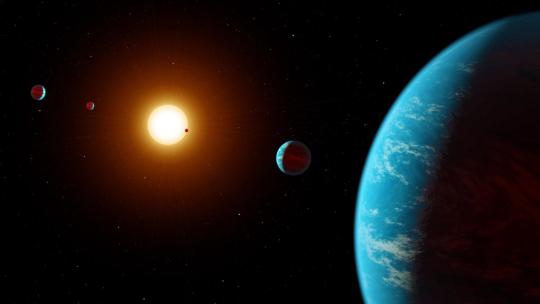
Investigadores están buscando signos de vida entre las atmósferas de exoplanetas
Una nueva investigación sugiere que la próxima generación de telescopios avanzados podría agudizar la búsqueda de vida extraterrestre…
LEE MÁS
0 notes
Text
"slowly getting there"
Created by proxima centauri b, this powerful AI Generative portrait presents a lone feminine subject framed by a beam of light as deep blue flowers convey the sacred status of our natural realm.
*
Join our discord @ discord.gg/GeQUgbQxqn

#digital art#digital artist#magic#divine#ai art#art#artist#Proxima centauri b#AI artist#Stable Diffusion#Nature#Natural#Natural Art#Nature Art#Feminine#Divinity#divine femininity#mother nature#mothernature#artmuseum#vr#delphinium#delphiniums#flowers#flower girl#flower#blue#ornate#luxury#magical
1 note
·
View note
Text

DOGDAYS FANMADE FAMILY BASED ON REAL STARS BECAUSE STARS ARE SO COOL AND I LOVE THEM SO MUCH
#poppy playtime#poppy playtime 3#art#fanart#dogday#trappist-1#g353.273+0641#(a baby star!!!)#alpha centauri a#alpha centauri b#proxima centauri#i love stars so much oh my gosh someone help me
274 notes
·
View notes
Text
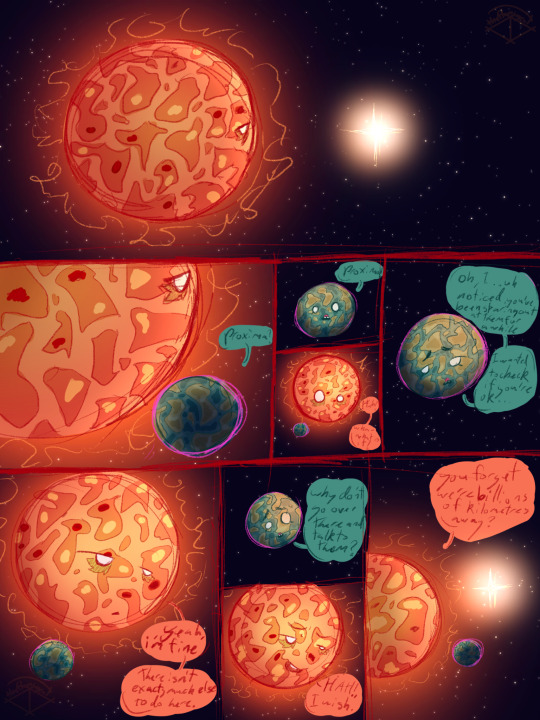
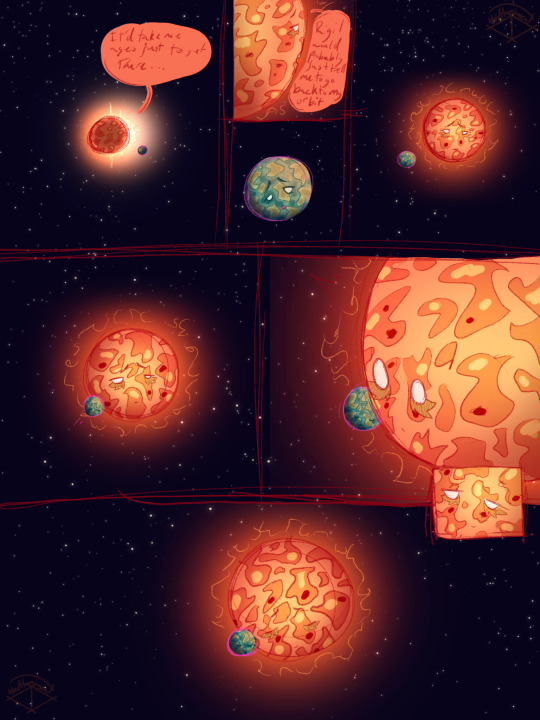
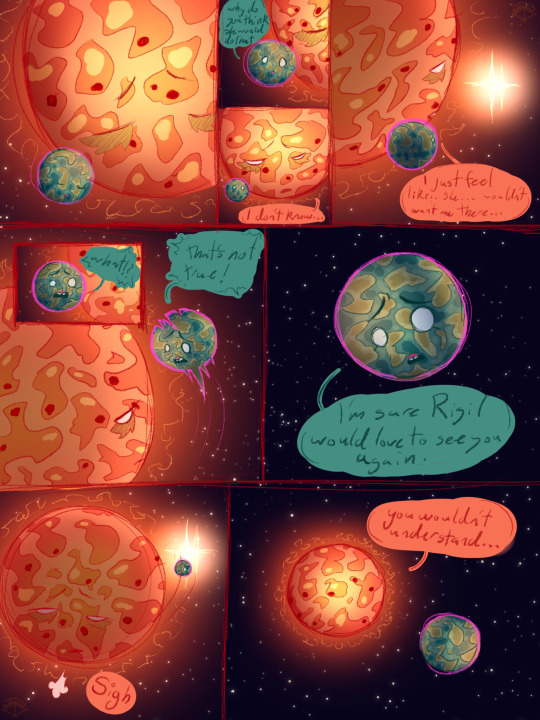
A little Proxima and Ataraxia (Proxima b) comic
#artists on tumblr#digital art#digital artist#original characters#solarballs#solarballs fanart#alpha centauri#proxima centauri#proxima b#fanart
46 notes
·
View notes
Text
Views from Alpha Centauri

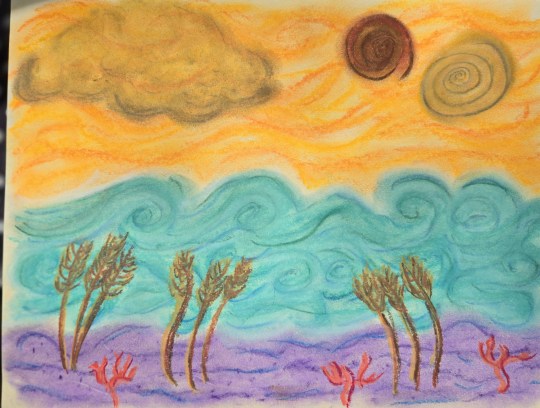
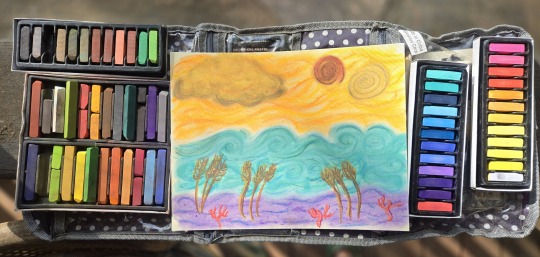
Had some fun playing with colorful chalk pastels.
A double sunset as seen from Proxima B maybe?
Lord Beelzebub was kind enough to ✨️fly ✨️ in for a visit 😅
#chalk pastel#i drew something#Proxima B#good omens fanart#good omens beelzebub#off topic#sort of#alpha centauri
8 notes
·
View notes
Photo
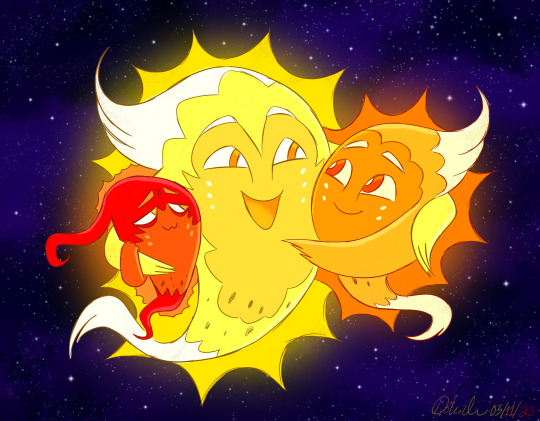
The Centauri Sisters!
#pazam draws#art#illustration#artists on tumblr#photoshop#my ocs#original characters#star child#rigil#alpha centauri a#toliman#alpha centauri b#proxima centauri
7 notes
·
View notes
Note
I kind of want to call you Macbeth. because the macb in your name made me think macbeth. idk. is that okay ?
that's one of the nicknames ever lmao yes you can call me macbeth but rest assured i will not go on a madness fueled murder rampage(for now)
#my url is proximacb#as in proxima c b#like the planet proxima centauri b#just fyi !!! but i find getting macb from the last part understandable lmao
4 notes
·
View notes
Text
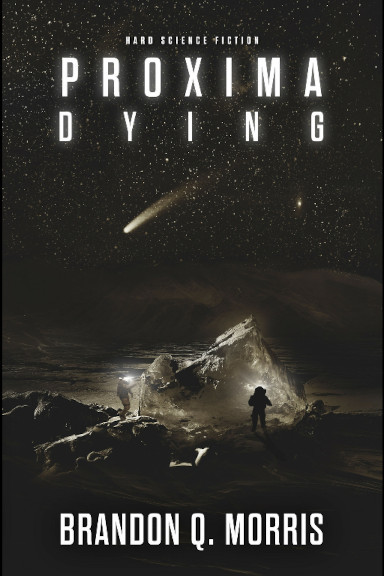
The novel "Proxima Dying" by Brandon Q. Morris was published for the first time in 2021. It's the second book in the Proxima Trilogy and follows "Proxima Rising". The English translation is by Frank Dietz.
Marchenko is using a robotic body to host him to be able to accompany Adam and Eve in their exploration of the planet Proxima b in search of the natives who sent a signal into space. It's certainly not an easy mission, especially after what they discovered.
On the planet's day side, the one always illuminated by its star, there seems to be no trace of sentient inhabitants. The travelers decide to move the search to the night side with the difficulties that this brings, starting with the perpetual darkness and the ice that covers that hemisphere.
0 notes
Text
youtube
Apr 19 - What is the "Big Event” That Tall Whites Predict for Earth?
Earthfiles!
#Tall Whites#Extraterrestrial Object#Pentagon#UFO Tracking#Senate Hearing#AARO Office#Proxima Centauri#Procyon A and B#Sirius A and B#USS Curtis Lemay#USS Hoyt Vandenberg#USS Roscoe Hillenkotter#Alien Contact#Big Cosmic Event#Nuclear Explosion#Alien Races#Rainbow in the Sky#Radiation#Contact Initiation#Mitigation#Youtube
0 notes
Video
youtube
Asteroid 2023 HK Closest Approach April 20, 2023
#youtube#proxima centauri bproxima bProxima B sending signalsproxima b sending signals to earthproxima centauri b sending radio signalscentauri bProx
0 notes